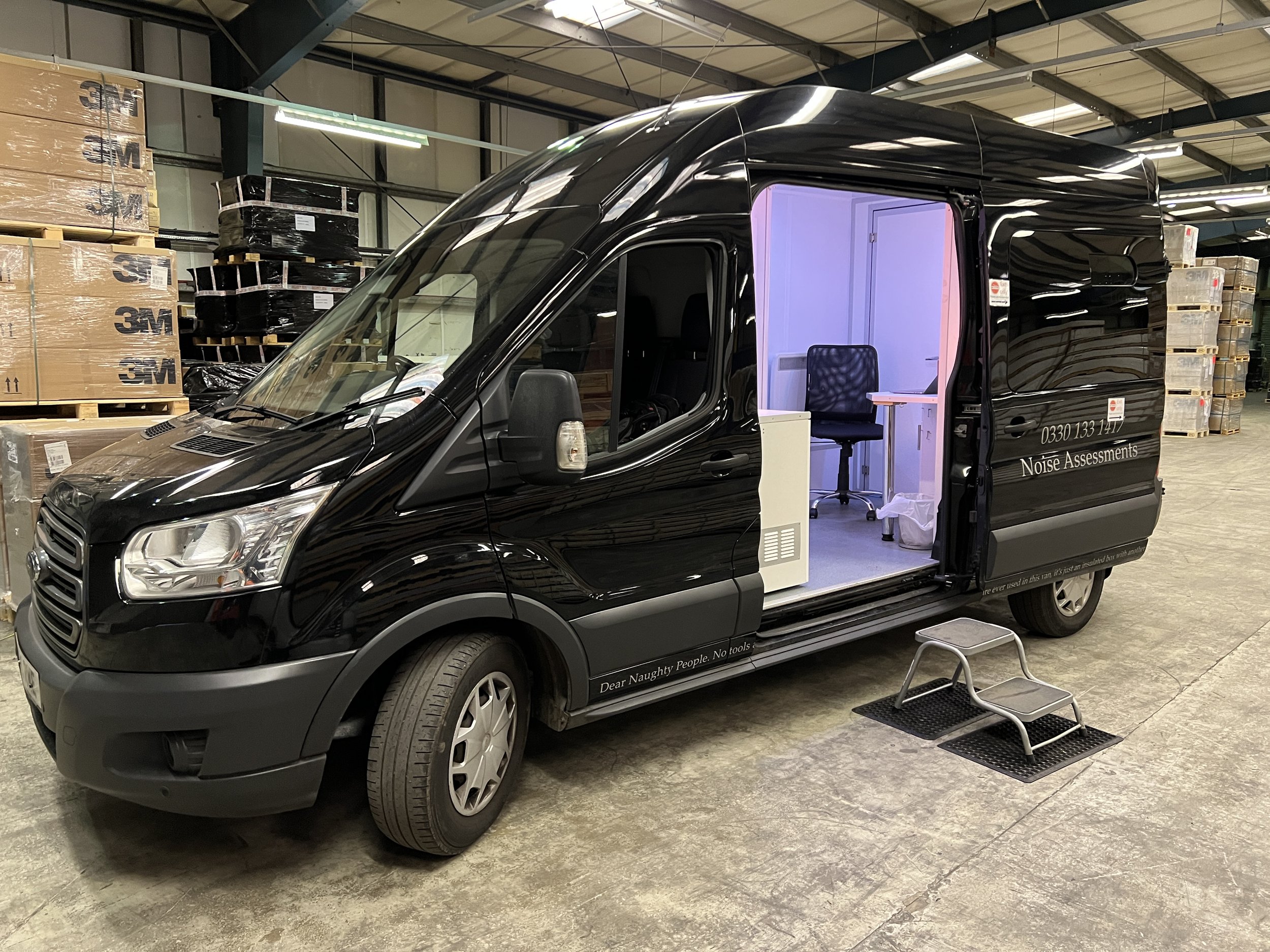
NOISE SAFETY TRAINING
Employee and manager training courses
Delivered on-site by very experienced trainer who also works in noise safety
For compliance with the noise safety training elements of the Noise Regs
We have a manager’s and supervisor’s variant
Courses include your own noise levels ● meet the Noise Regs training requirements
Multiple courses can be done in one day ● shifts covered if needed
Trainer is highly experienced in both training and noise assessment and audiometry
Courses are not ‘dry’ and include demonstrations of noise induced hearing loss
2023 marks 30 years of our owner’s experience delivering workplace noise safety and training
if we say so ourselves, our employee noise awareness training courses are very good. Our courses are designed to talk about people’s total noise exposures as well as the noise they may get at work, giving them some perspective of how noise impacts their lives. If you provide us with it, we add your own noise data into the courses in a way that is natural and within the flow of the course, meaning you cover the regulatory requirement to inform employees of the key results of your noise assessments without it being a dry and boring list.
We have developed our own demonstrations of noise induced hearing loss, letting attendees see what all the waffle about decibels actually means to how they will hear things.
A major benefit of in-person training is that we encourage questions and can deal with them as they arise, meaning attendees get information which is directly relevant to them and their workplace and their concerns rather than an entirely pre-packaged thing they have to sit through.

Noise Regs compliance
The Noise Regs are very specific regarding the training which must be given to employees for noise safety. (More info on that below)
We ensure the course covers all the elements for you in a way which is natural and chatty rather than a preachy nerd droning on about the law. The causes is, dare we say it, verging on enjoyable and interesting!
Includes a practical demonstration of noise induced hearing loss.
Or email: hello@thenoisechap.com
Why use in-person training
In-person training is vastly superior to online courses for many reasons. The course is delivered by someone very experienced in training and noise safety meaning a good depth of knowledge and ability to deliver it.
We can respond to employee questions and tweak the course to meet their specific needs - if they have an issue with something we can answer directly for them. We amend the presentation itself to include your noise levels so the content is directly relevant to them.
Managers and Supervisors
We have a variant designed for managers and supervisors in a company.
Still ‘short and sweet’ at about an hour and a half so no need to take them out of work for hours, but focused more towards what the company has to about noise and what is needed from all levels of management.
We promise, it is not a dry and boring nasal ‘this is what the law says’ style course, honest! It is informative and helpful.
“Just thought I would feed back to you how much the teams enjoyed the noise safety training last week and believe me, it isn’t easy pleasing this crowd!” H&S Manager for a brewery in Manchester, Sept ‘23.
Noise training quote
More information on our noise safety training
If there is anything else you would like to know, please just email us
-
The Noise Regs say that noise awareness training has to be done for anyone who is routinely exposed to noise levels over 80 dB(A) - the lower of the limits, not the 85dB(A) point where hearing protection is needed.
Companies should also train managers and supervisors in what is needed for their role as the Noise Regs have specific supervisory requirements for noise safety.
-
We cover all the main element needed by the Noise Regs:
What noise is
Key concepts about noise in a rather chatty way, using loads of examples. Includes a walk through common noise levels so they have something to relate to, hopefully giving it some meaning rather than it being just a load of random numbers.
Time is spent in this part on non-occupational noise exposures as well as workplace ones so they get the idea that noise is a total exposure, not just something they get at work.
If the client can give us a copy of their noise assessment a week in advance we can modify this section for each specific course so it includes the noise levels in their workplace as part of the noise levels run-through.
We also sprinkle the info on the exposure limits in this bit where it naturally fits in. The Noise Regs require it so by sprinkling it in this section we avoid the dry ‘this is what the law says’ bit which everyone hates and never listens to in any health and safety course.
Recognising when noise is dangerous
This gives them some rough and ready ideas of how they can identify when noise levels are getting too high and may start to have an impact on their hearing. This is one of the mandatory parts of the training in L108.
Anatomy of an ear
The Noise Regs require employees to be trained in the effect of noise on hearing, which can sound a bit dry but from experience this is one of the parts attendees really seem to perk up about and take in.
How noise damages hearing
While a section on anatomy followed by another explaining how noise damages hearing sounds utterly tedious on the surface, alongside the anatomy this is probably the part of the course attendees talk the most about afterwards.
The section starts off explaining how noise damages selective parts of hearing and how it develops and worsens, but the key bit is then a piece of music to which we have applied a series of filters to mimic developing hearing loss. This makes the deteriorating hearing stark, not just in terms of volume but in how 'mushy' sound gets with increasing noise-related losses.
We also touch on audiometry as part of this - again, the Noise Regs say this is mandatory component so including it here fits it in without it being a separate, and rather boring, section.
Hearing protection and its use
This section, again a mandatory part, covers a few bits ranging from the dangers of removing hearing protection in a high noise area to talk to other people via a worked through example, the types of hearing protection available, plusses and minuses of each type, how to use it and how to maintain it. We also stress that music headphones are not hearing protection.
Finishing bit
There is then a summary of it all and a verbal Q&A to reiterate all the main parts.
-
Probably 75% is the same as the employee course, but then with more focus on what the company requirements are. So, a distillation of the employee course but then with:
More focus on the regulatory bit so the managers know what is needed and why. Training needs and audiometry.
A bit more focus on the results of a noise assessment (if you have had one done and send us the results)
Focus on the enforcement needs - the Noise Regs are very specific about ongoing supervision and monitoring so the course cover that.
Clarification of the enforcement levels needed - that it is not just ‘they were given hearing protection and told to wear it’ so that’s our bit done .
Detail on some specific common issues such as employees wanting to sign disclaimers that they accept the risk of not wearing hearing protection, or use of noise-canceling music headphones / ear buds at work.
-
The ideal maximum is about 15 and not over 20. The main reason is that below this people tend to be happy to speak up and ask questions and engage with the course, whereas over that a lot of people don’t like speaking up in front of large numbers of other people so tend to keep quiet. The client gets better value on a maximum of 15 to 20.
-
We have an advantage here in that our trainer is a proper noise nerd and also hugely experienced in training.
He conducts noise assessments and has done so for nearly three decades, covering every industry imaginable meaning he has a solid knowledge base to call on.
He also does hearing tests so has a thorough understanding of the ear and how noise impacts it.
And finally he has bored people on a huge range of safety training subjects for many years meaning he is a confident and clear speaker, amending his presentation style ‘on the hoof’ to match the attendees at any one time.
-
No problem at all and we happily cover shifts. Who doesn’t love listening to someone talking about noise at it goes midnight?
-
We plan on each course being about 90 minutes. This is as short as you can go while still covering off all the mandatory training elements from the Noise Regs.
This gets it all done in one hit while being short enough to retain interest.
That applies to both courses - the noise awareness training for employees and the noise safety courses for managers and supervisors.
-
Clients get scanned copies of the sign-in sheet(s) on the day and a Company Course Certificate which confirms the date, content and attendee names.
The company certificate gives a single handy confirmation of the training should someone such as an insurer or one of the horned devils from the HSE ask for it.
-
Noise awareness courses offered by The Noise Chap are available as bi-lingual courses, with them being offered in both English and Northern. "Now then lad, sit thee down as a've got fot tell thee about this 'ere noise gubbins".



